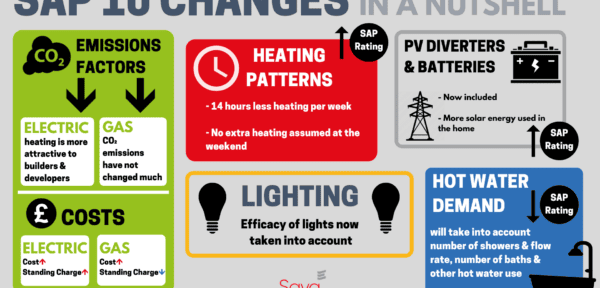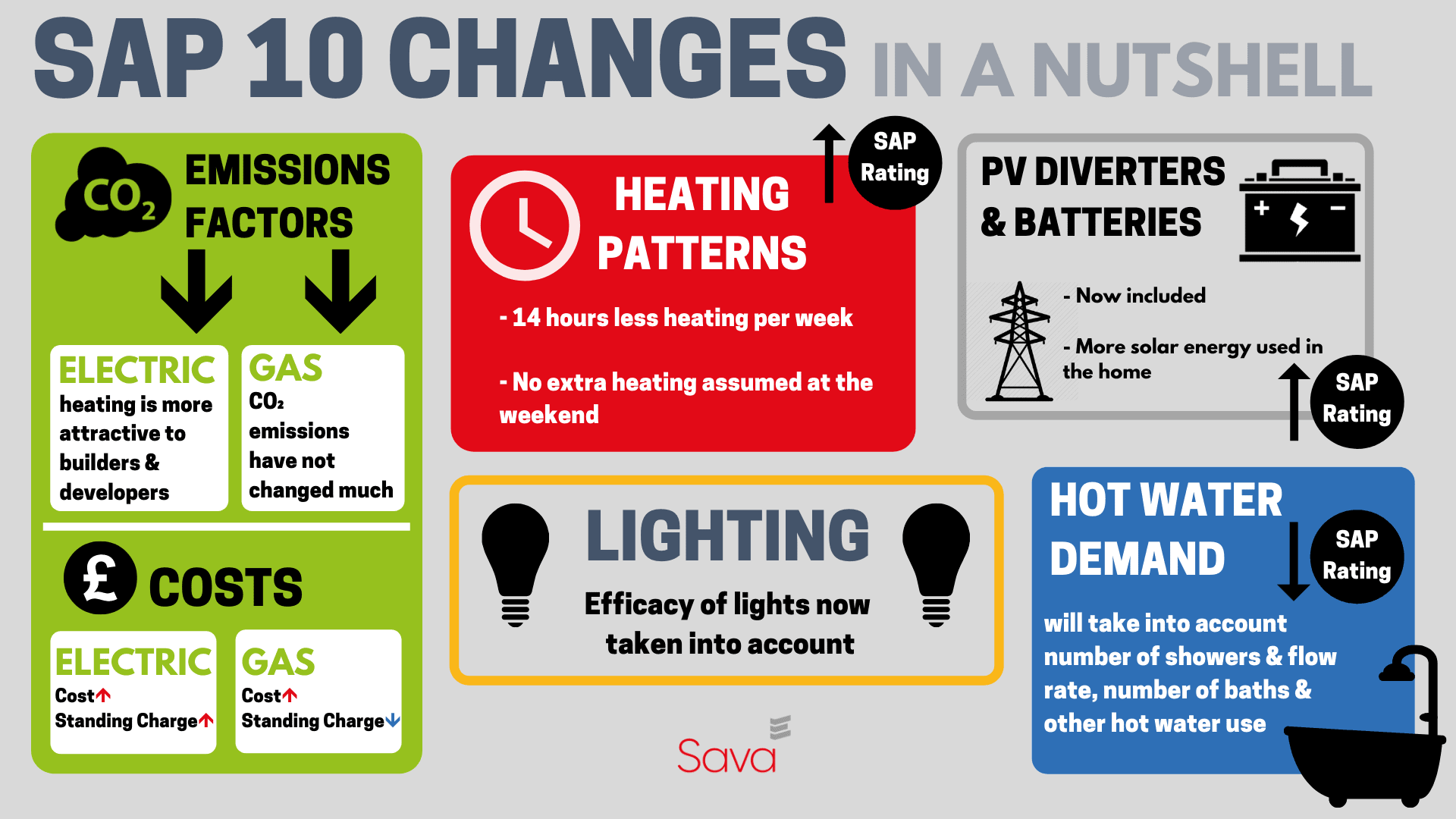How we model the energy efficiency and carbon output of our homes is changing.

Why the change?
There are some big changes coming to the way we measure the energy efficiency and carbon emissions of UK homes. SAP is the national calculation methodology used for everything from building regulations compliance through to Energy Performance Certificates, and the new Social Housing Decarbonisation Fund.
The last major revision to SAP was in 2014, and this year the new version – SAP 10 – is being released. These changes have been driven by homes become more energy efficient due to insulation and air tightness. Other energy demands such as hot water, lighting and renewables will account for a higher percentage of energy use and therefore need to be modelled more accurately. In addition, unless SAP takes account of new technologies, it will suppress their take up.
When’s it coming?
The new SAP will first make its appearance for new build homes in the new Part L of the building regulations in England in June. Exactly how it will be implemented in the RdSAP calculation used for existing homes is still being finalised, but we expect the calculations to be introduced in late 2022 / early 2023.
Carbon from electricity is down 75%
The most significant impact for those modelling their carbon emissions is an updating to the carbon factors for electricity with SAP 10 using a factor of just 0.136 kg/kWh compared to the current 0.519 kg. This reflects the decarbonisation of the UK electricity grid and will make a significant reduction in carbon when modelling homes using any form of electrically driven heating system.
Find out more
Check out our range of free technical webinars including SAP 10 and many other issues facing housing providers.
